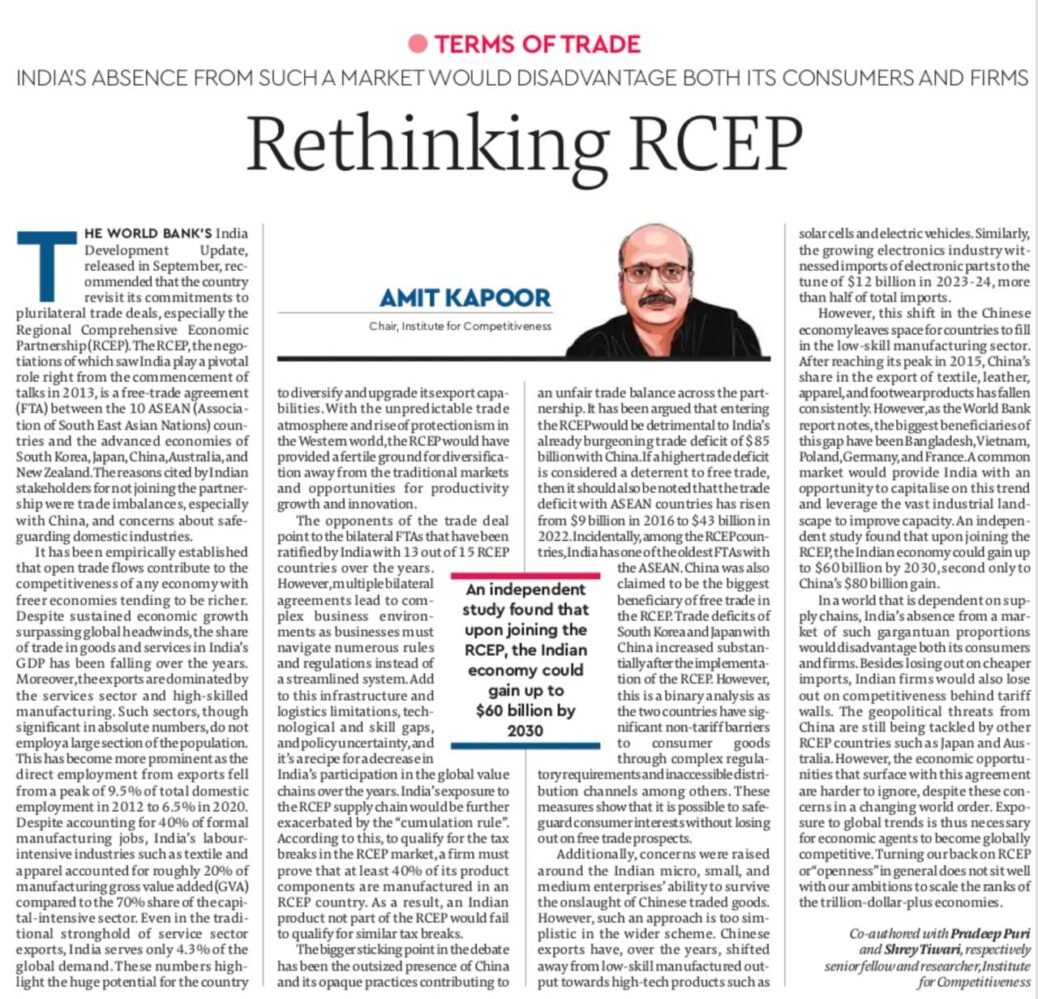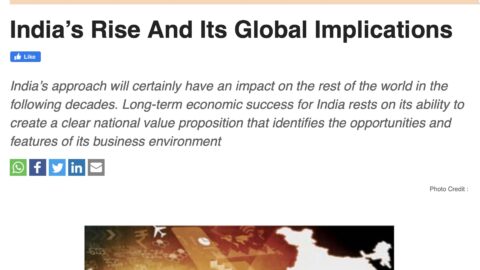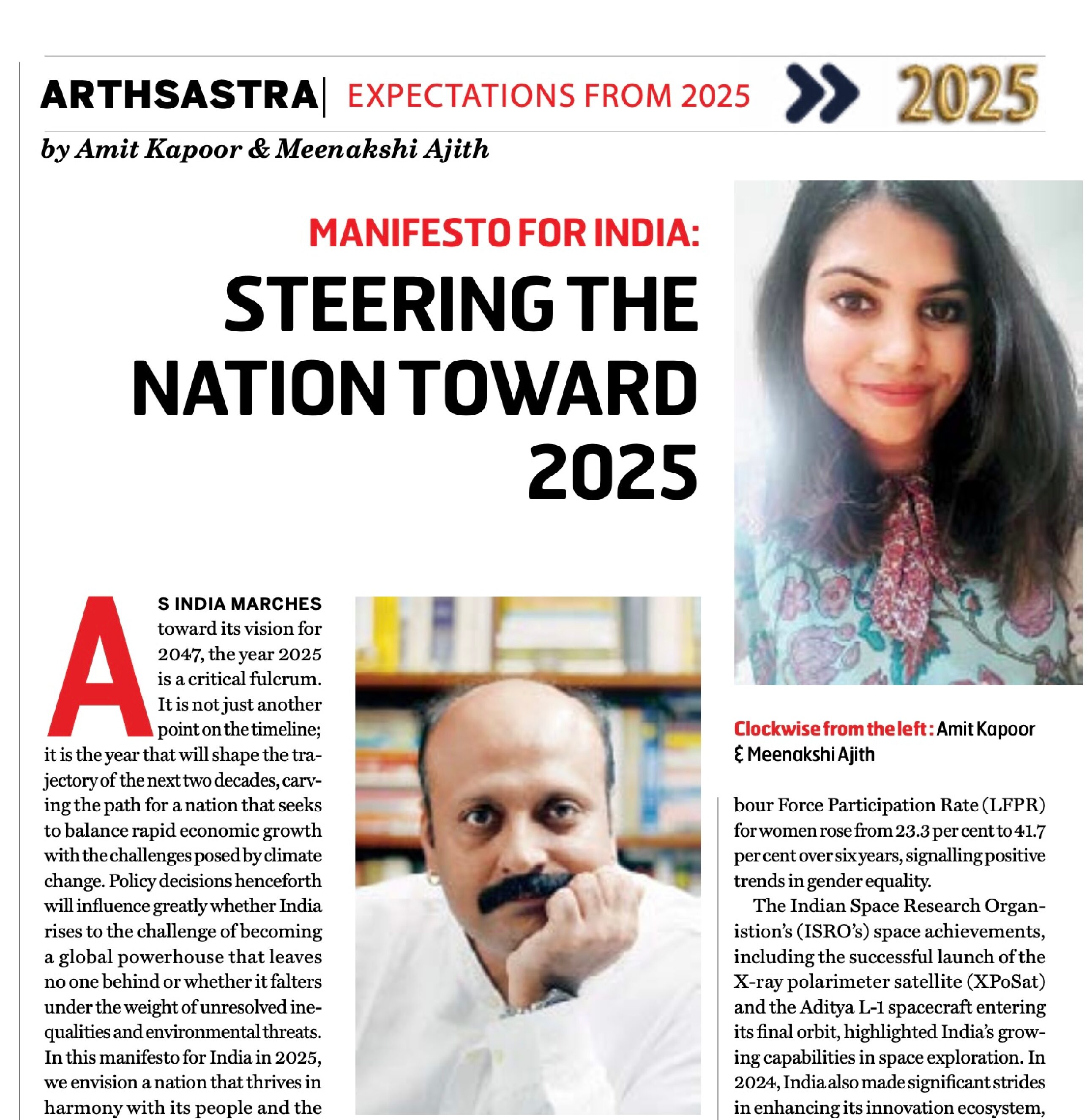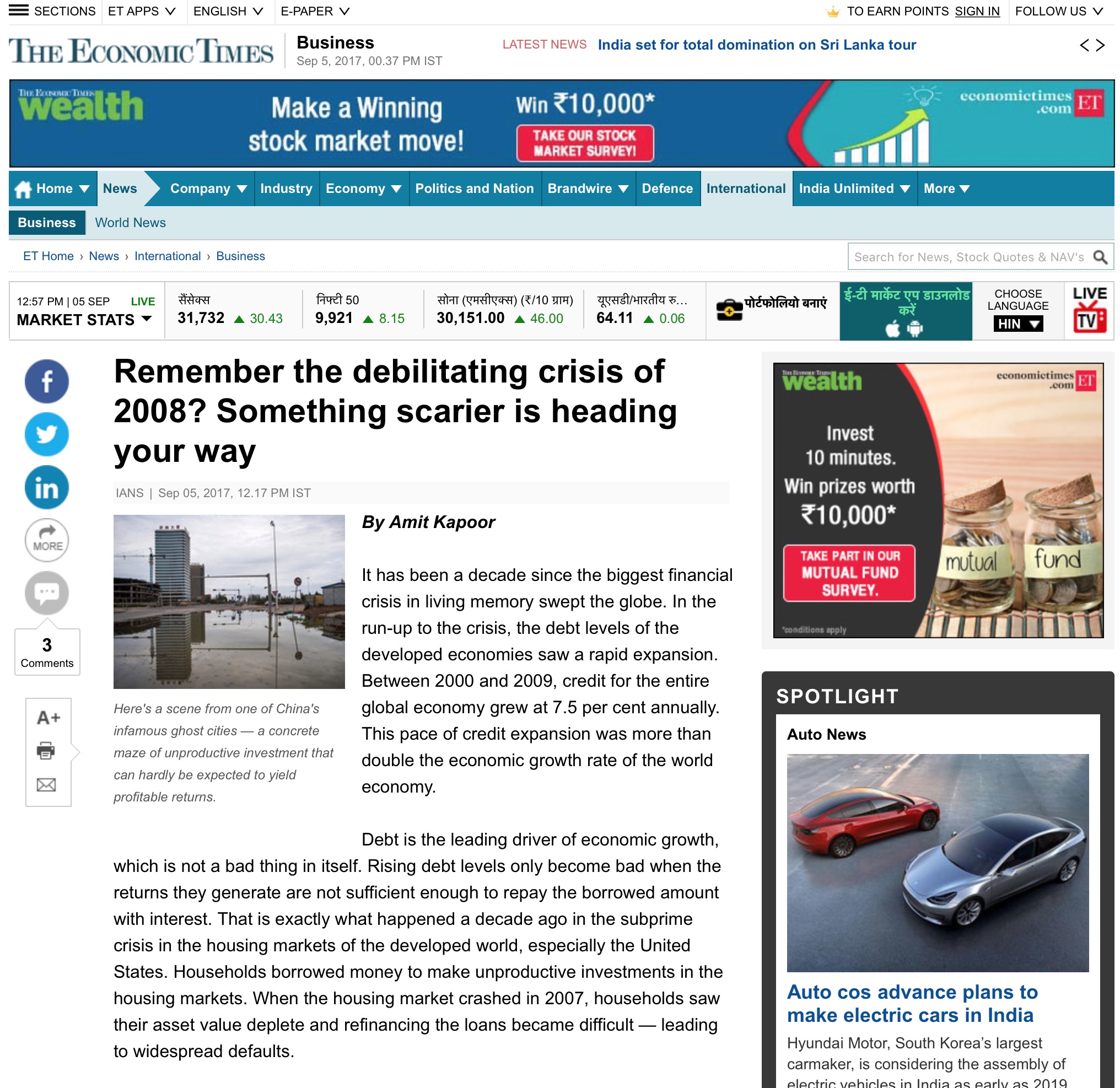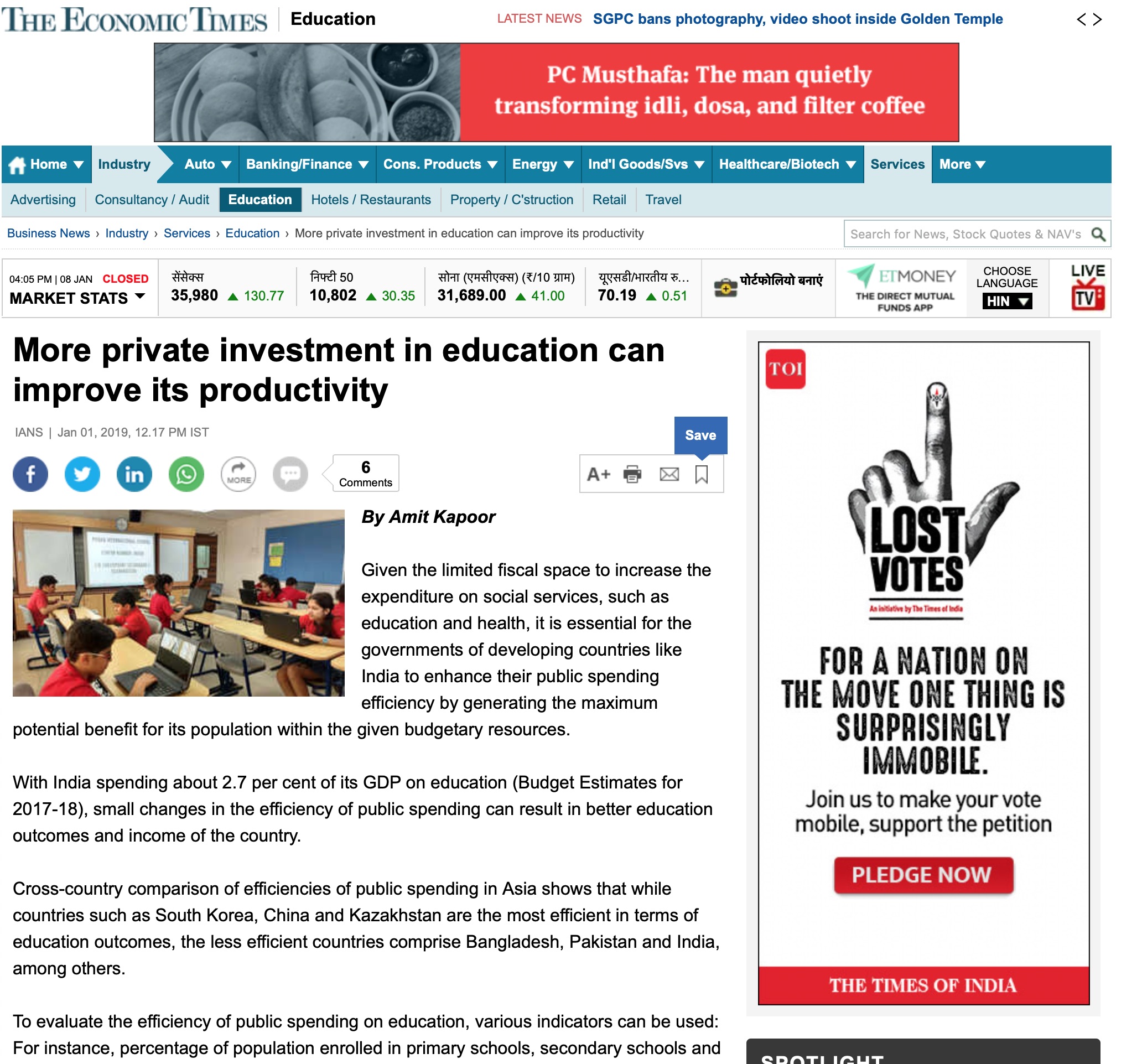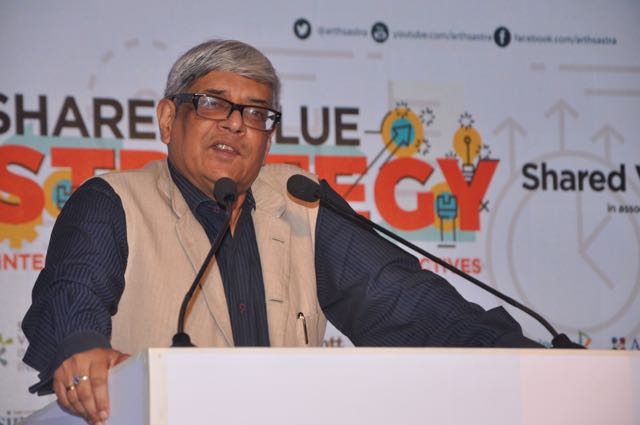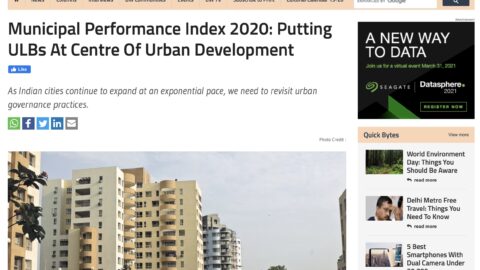Amit Kapoor, Pradeep Puri and Shrey Tiwari
The World Bank’s India Development Update, released in September this year, recommended that the country revisit its commitments to plurilateral trade deals, especially the Regional Comprehensive Economic Partnership (RCEP). The RCEP, the negotiations of which saw India play a pivotal role right from the commencement of talks in 2013, is a free-trade agreement between the 10 ASEAN countries and the advanced economies of South Korea, Japan, China, Australia, and New Zealand. The reasons cited by Indian stakeholders for not joining the partnership were trade imbalances, especially with China, and concerns regarding safeguarding domestic industries.
It has been empirically established that open trade flows contribute to the competitiveness of any economy with freer economies tending to be richer. Despite sustained economic growth surpassing global headwinds, the share of trade in goods and services in India’s GDP has been falling over the years. Moreover, the exports are dominated by the services sector and high-skilled manufacturing. Such sectors, though significant in absolute numbers, do not employ a large section of the population. This has become more prominent as the direct employment from exports fell from a peak of 9.5% of total domestic employment in 2012 to 6.5% in 2020. Despite accounting for 40 percent of formal manufacturing jobs, India’s labor-intensive industries such as textile, and apparel accounted for roughly 20 percent of manufacturing GVA compared to the 70% share of the capital-intensive sector. Even in the traditional stronghold of service sector exports, India serves only 4.3% of the global demand. These numbers highlight the huge potential for the country to diversify and upgrade its export capabilities. With the unpredictable trade atmosphere and rise of protectionism in the Western world, the RCEP would have provided a fertile ground for diversification away from the traditional markets and opportunities for productivity growth and innovation.
The opponents of the trade deal point to the bilateral Free Trade Agreements that have been ratified by India with 13 out of 15 RCEP countries over the years. However, multiple bilateral agreements lead to complex business environments as businesses must navigate numerous rules and regulations instead of a streamlined system. Add to this infrastructure and logistics limitations, technological and skill gaps, and policy uncertainty, it’s the recipe for a decrease in India’s participation in the Global Value Chains over the years. India’s exposure to the RCEP supply chain would be further exacerbated by the “Cumulation Rule”. According to this, to qualify for the tax breaks in the RCEP market, a firm must prove that at least 40% of its product components are manufactured in an RCEP country. As a result, an Indian product, not part of the RCEP would fail to qualify for similar tax breaks.
The bigger sticking point in the debate has been the outsized presence of China and its opaque practices contributing to an unfair trade balance across the partnership. It has been argued that entering the RCEP would be detrimental to India’s already burgeoning trade deficit of $85 bn with China. If a higher trade deficit is considered a deterrent to free trade, then it should also be noted that the trade deficit with ASEAN countries has risen from $9 bn in 2016 to $43 bn in 2022. Incidentally, among the RCEP countries, India has one of the oldest FTAs with the ASEAN. China was also claimed to be the biggest beneficiary of free trade in the RCEP. Trade deficits of South Korea and Japan with China increased substantially after the implementation of the RCEP. However, this is a binary analysis, as the two countries have significant non-tariff barriers to consumer goods through complex regulatory requirements, and inaccessible distribution channels, among others. These measures show that it is possible to safeguard consumer interests without losing out on free trade prospects.
Additionally, concerns were raised around the Indian MSME’s ability to survive the onslaught of Chinese traded goods. However, such an approach is too simplistic in the wider scheme. Chinese exports have over the years shifted away from low-skill manufactured output towards high-tech products such as solar cells and EVs. Similarly, the growing electronics industry witnessed imports of electronic parts to the tune of $12 bn in 2023-24, more than half of total imports.
However, this shift in the Chinese economy leaves space for countries to fill in the low-skill manufacturing sector. After reaching its peak in 2015, China’s share in the export of Textile, Leather, Apparel, and Footwear products has fallen consistently. However, as the World Bank report notes, the biggest beneficiaries of this gap have been Bangladesh Vietnam, Poland, Germany, and France. A common market would provide India with an opportunity to capitalize on this trend and leverage the vast industrial landscape to improve capacity. An independent study found that upon joining the RCEP, the Indian economy could gain up to $60 bn by 2030, second only to China’s $80 bn gain.
In a world dependent on supply chains, India’s absence from a market of such gargantuan proportions would disadvantage both its consumers and firms. Besides losing out on cheaper imports, Indian firms would also lose out on competitiveness behind tariff walls. The geopolitical threats from China are still being tackled by other RCEP countries such as Japan and Australia. However, the economic opportunities that surface with this agreement are harder to ignore despite these concerns in a changing world order. Exposure to global trends is thus necessary for economic agents to become globally competitive. Turning our back on RCEP or “openness” in general does not sit well with our ambitions to scale the ranks of the trillion dollar plus economies.
The article was published with Financial Express on December 2, 2024.
(Amit Kapoor is chair, Pradeep Puri is senior fellow and Shrey Tiwari is researcher with Institute for Competitiveness).

